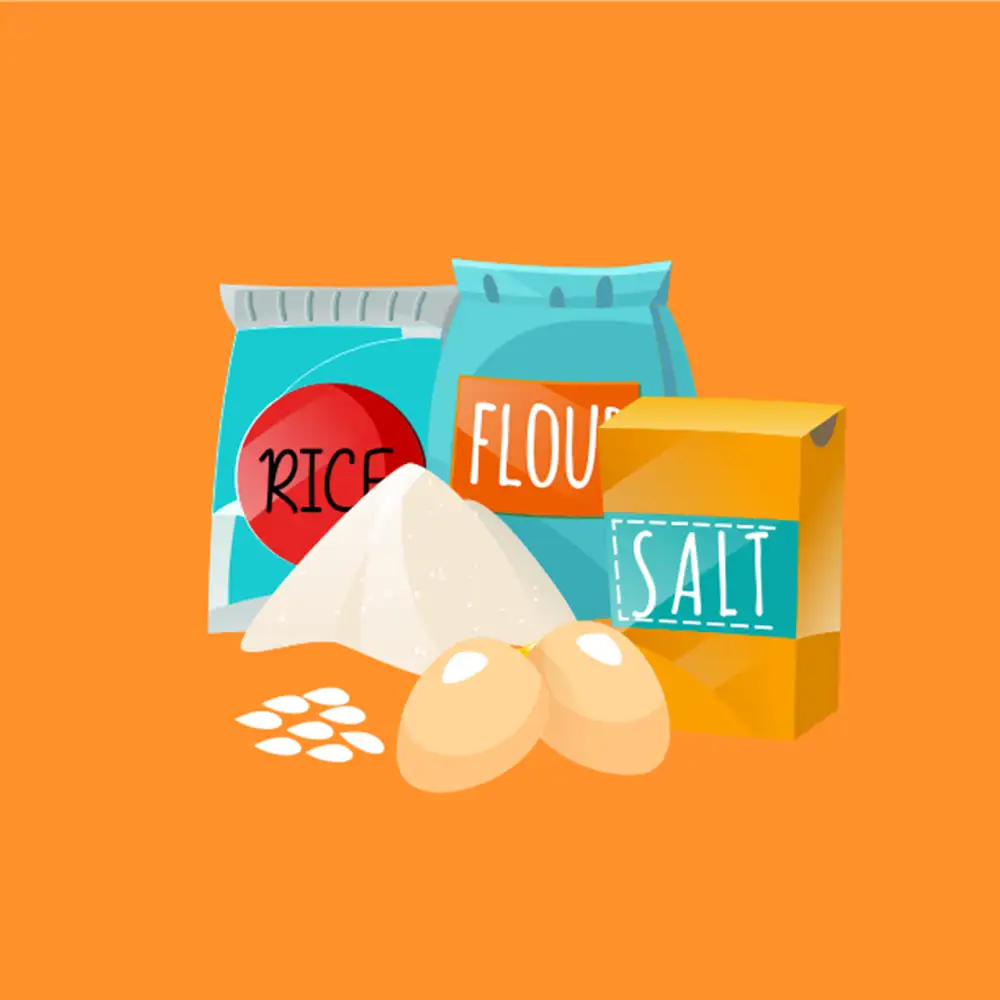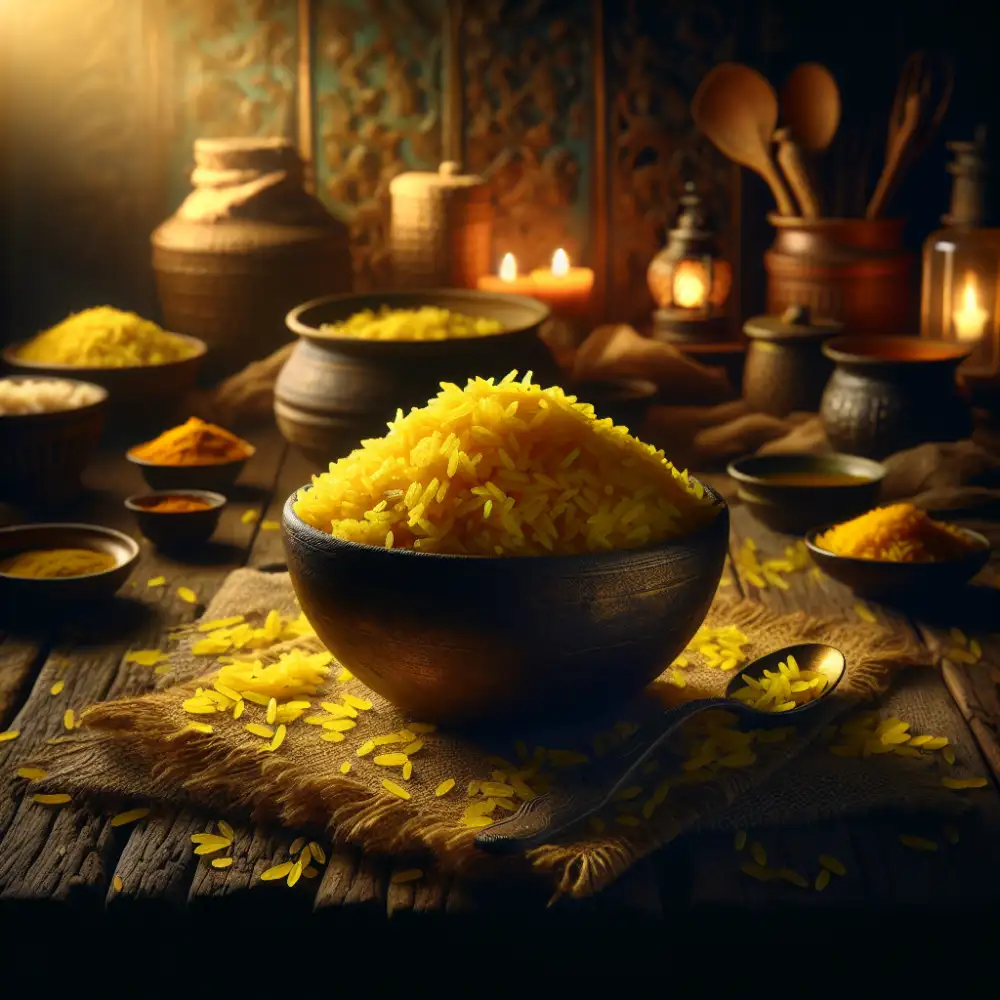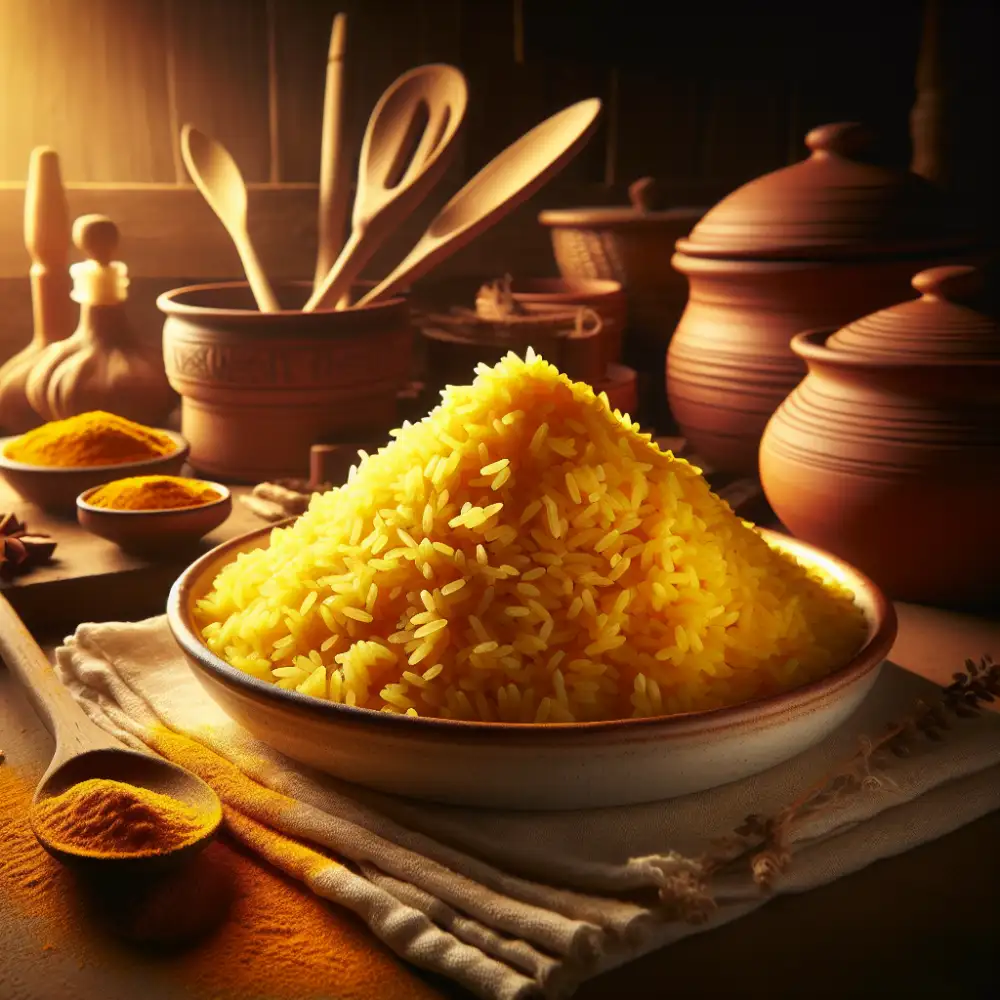Golden Goodness: Exploring the World of Yellow Rice

Yellow Rice Basics
Yellow rice is a staple dish in many cuisines around the world, from Spanish paella to Indian biryani. Its vibrant color and fragrant aroma instantly signal flavor and warmth. But what exactly is yellow rice, and how do you make it?
At its core, yellow rice is simply rice that has been cooked with turmeric or saffron, spices that impart a beautiful golden hue. Turmeric, with its earthy and slightly bitter notes, is the more common and affordable option. Saffron, on the other hand, is prized for its floral, almost honeyed fragrance and comes with a hefty price tag.
The beauty of yellow rice lies in its versatility. It can be as simple or as complex as you like. A basic recipe might involve sautéing onions in oil or butter, then adding rice and turmeric, and finally, simmering it in broth until tender. This creates a flavorful side dish that pairs well with a variety of proteins and vegetables.
For those who prefer more adventurous flavors, the possibilities are endless. You can incorporate aromatics like garlic, ginger, and chilies. Vegetables like peas, carrots, and corn add sweetness and texture. And for a protein boost, lentils, chickpeas, or diced chicken can be added to the mix.
Yellow rice is not just delicious, it's also incredibly easy to make. With just a few pantry staples, you can have a vibrant and flavorful dish on the table in under 30 minutes. And because it's so versatile, it can be adapted to suit any taste or dietary preference.
So next time you're looking for a simple yet satisfying side dish, skip the plain white rice and opt for a bowl of sunshine instead. Your taste buds will thank you.
| Feature | Yellow Rice | Plain White Rice |
|---|---|---|
| Color | Yellow (from turmeric or saffron) | White |
| Flavor Profile | Earthy, slightly peppery (turmeric) or delicate, floral (saffron) | Neutral |
| Common Uses | Side dish, part of a larger dish (e.g., biryani), often served with curries | Side dish, base for stir-fries, ingredient in soups and stews |
Global Variations
Yellow rice, a dish as vibrant as sunshine, boasts a global presence with fascinating variations across cultures. In many Latin American countries, arroz amarillo is a staple, often flavored with cumin, garlic, and onions. It's a common accompaniment to meat and seafood dishes, adding a burst of color and flavor.
Moving to South Asia, Indian cuisine features countless versions of yellow rice. Known as pulao or biryani, these aromatic dishes often incorporate saffron, lending a luxurious aroma and a distinctive golden hue. Spices like cardamom, cloves, and cinnamon further enhance the flavor profile.

Moroccan cuisine offers another delicious rendition of yellow rice. Their version, seasoned with saffron, turmeric, and raisins, delivers a sweet and savory experience. It's frequently served with tagines, absorbing the rich flavors of the accompanying stews.
Even in European countries like Spain, yellow rice, known as arroz amarillo, holds a special place. Often prepared with seafood like mussels and prawns, Spanish yellow rice gets its vibrant color from saffron. The dish is a testament to the region's love for seafood and flavorful rice dishes.
These examples showcase the global appeal of yellow rice. Each culture has embraced the dish, adapting it with local ingredients and culinary traditions. Whether it's the cumin-spiced rice of Latin America or the saffron-infused biryani of India, yellow rice continues to delight taste buds worldwide.
Culinary Uses
Yellow rice, with its vibrant hue and subtly earthy flavor, is a blank canvas for culinary creativity. It's a staple in many cuisines, each with its unique twist. In India, you'll find fragrant biryanis where yellow rice is layered with meat, vegetables, and aromatic spices. Moroccan cuisine features tagines, where tender lamb or chicken is slow-cooked with dried fruits and nuts atop a bed of fluffy yellow rice. Spanish paella often gets its signature golden color from saffron, infusing the rice with a delicate floral aroma. Latin American and Caribbean cuisines embrace "arroz amarillo," frequently seasoned with cumin, coriander, and garlic, served alongside beans, plantains, and grilled meats. Beyond these traditional dishes, yellow rice is incredibly versatile. Its neutral flavor profile makes it an excellent side for spicy curries, grilled fish, or roasted vegetables. You can also incorporate it into salads, stir-fries, or use it as a base for grain bowls. Get creative and let yellow rice add a pop of color and a touch of exotic flair to your meals.
Nutritional Value
Yellow rice, with its vibrant hue and fragrant aroma, is not just a feast for the eyes and nose but also offers a surprising nutritional punch. While the exact nutritional profile can vary depending on the ingredients and cooking methods, here's a general overview:
At its core, yellow rice starts with rice, a staple food rich in carbohydrates, providing energy for your body. The type of rice used, whether white or brown, influences the fiber content. Brown rice, being a whole grain, retains its bran and germ layers, making it a good source of fiber, which aids digestion and promotes gut health.
The star ingredient, turmeric or saffron, is where the magic happens, both nutritionally and aesthetically. Turmeric, a spice commonly used in Indian cuisine, contains curcumin, a potent antioxidant known for its anti-inflammatory properties. Studies suggest that curcumin may contribute to reducing inflammation in the body, potentially benefiting conditions like arthritis and heart disease.

Saffron, on the other hand, is a prized spice known for its distinct flavor and aroma. While used in smaller quantities due to its high cost, saffron boasts an array of antioxidants, including crocin, the compound responsible for its vibrant color. These antioxidants may help protect cells against oxidative stress and damage.
Beyond the rice and spices, the additional ingredients in yellow rice contribute to its nutritional value. Onions and garlic, often used as aromatics, are packed with flavor and offer health benefits. Onions are a good source of quercetin, an antioxidant linked to improved heart health, while garlic contains allicin, known for its immune-boosting properties.
Furthermore, the inclusion of vegetables in yellow rice, such as peas, carrots, or bell peppers, enhances its nutritional content. These vegetables are rich in vitamins, minerals, and fiber, contributing to overall health and well-being.
In conclusion, yellow rice can be a nutritious and flavorful addition to your diet. Choosing brown rice over white rice boosts the fiber content, while the spices and vegetables add a wealth of antioxidants, vitamins, and minerals. Whether enjoyed as a side dish or a main course, yellow rice offers a delightful way to nourish your body and tantalize your taste buds.
Easy Recipe Ideas
Yellow rice, also known as arroz amarillo, is a staple dish in many cultures. It gets its vibrant hue from turmeric or saffron, both of which offer a subtle earthy flavor. The beauty of yellow rice lies in its simplicity and versatility.
Here are some easy recipe ideas using yellow rice:
One-Pot Wonders: Toss cooked chicken, chorizo, or shrimp with yellow rice, frozen peas, and your favorite seasonings for a quick and satisfying meal.
Flavorful Side Dish: Serve yellow rice alongside grilled fish, roasted vegetables, or spicy curries for a vibrant and complementary side.
Stuffed Delights: Use yellow rice as a stuffing for bell peppers, tomatoes, or even baked chicken for a flavorful twist.
Salad Sensations: Let cooled yellow rice shine in salads. Combine it with chopped cucumbers, tomatoes, fresh herbs, and a lemony dressing for a refreshing meal.
Rice Bowls: Create satisfying and customizable rice bowls with yellow rice as the base. Top with black beans, roasted sweet potatoes, avocado, salsa, and your choice of protein.
No matter how you choose to prepare it, yellow rice is a simple, budget-friendly way to add a pop of color and flavor to your meals.
Published: 04. 07. 2024
Category: Food



